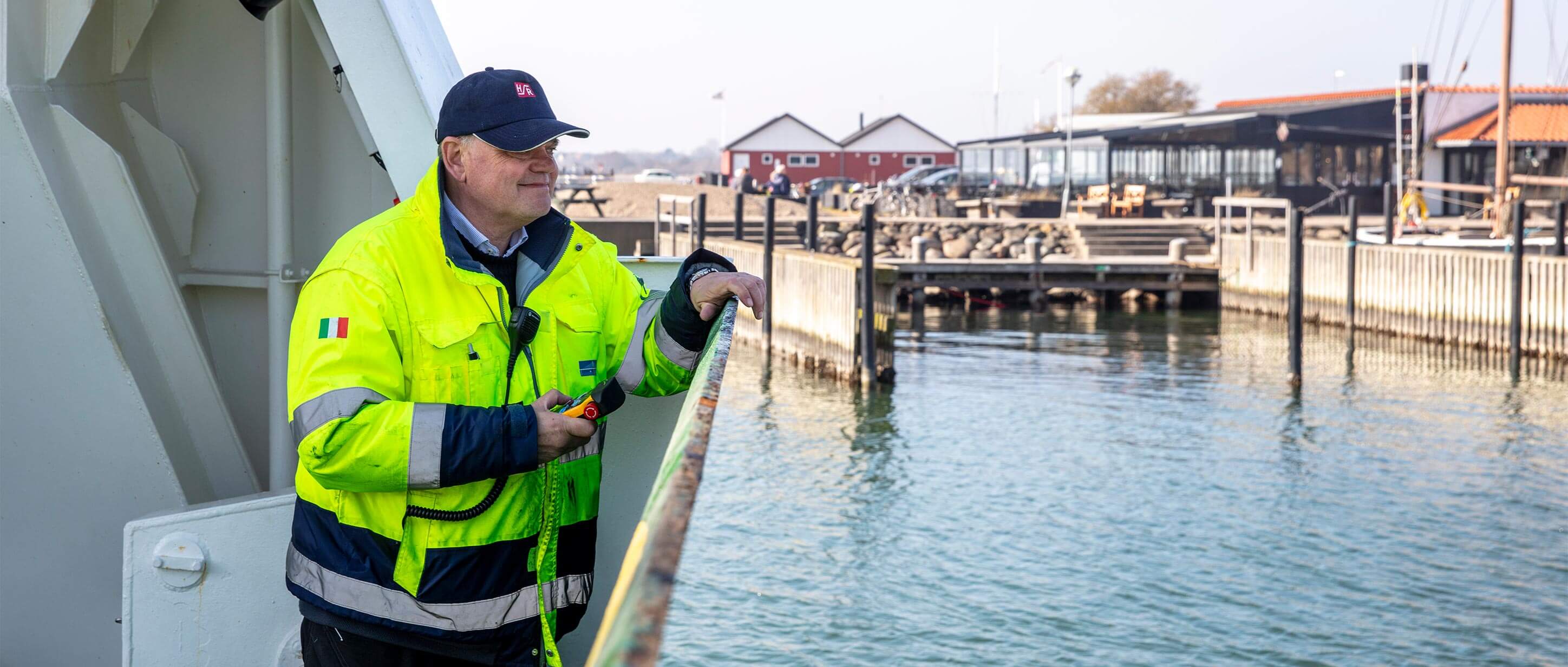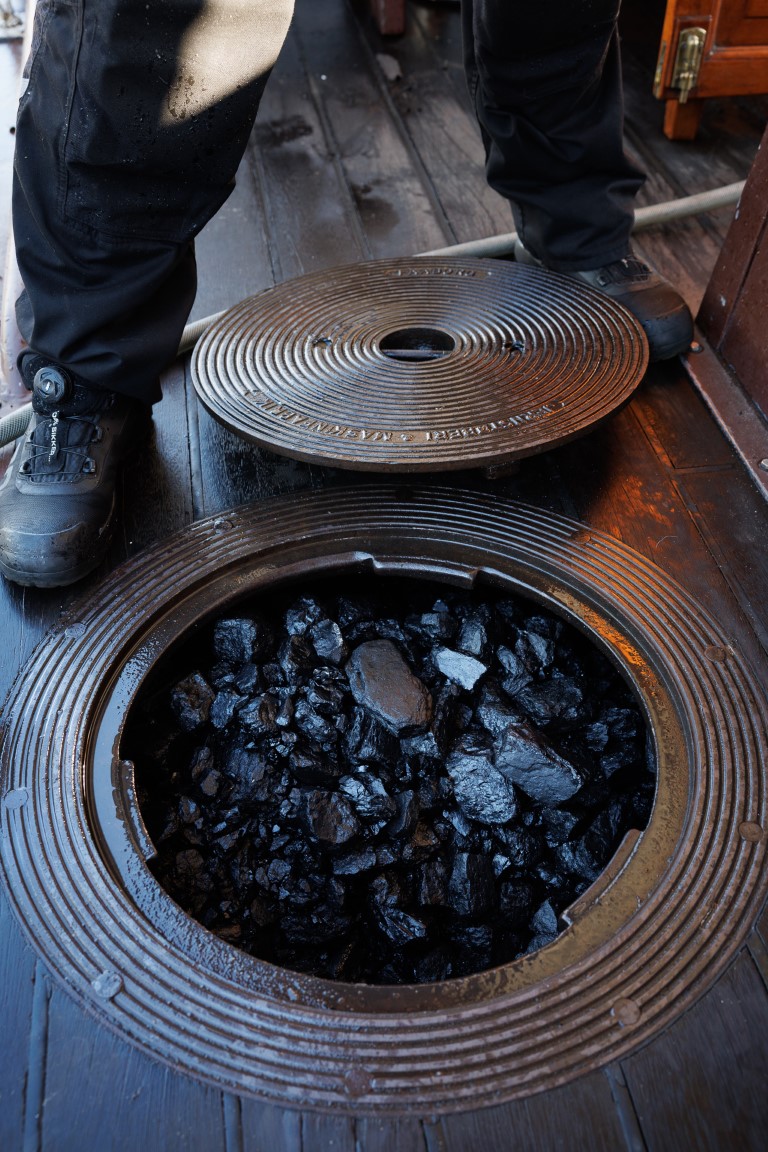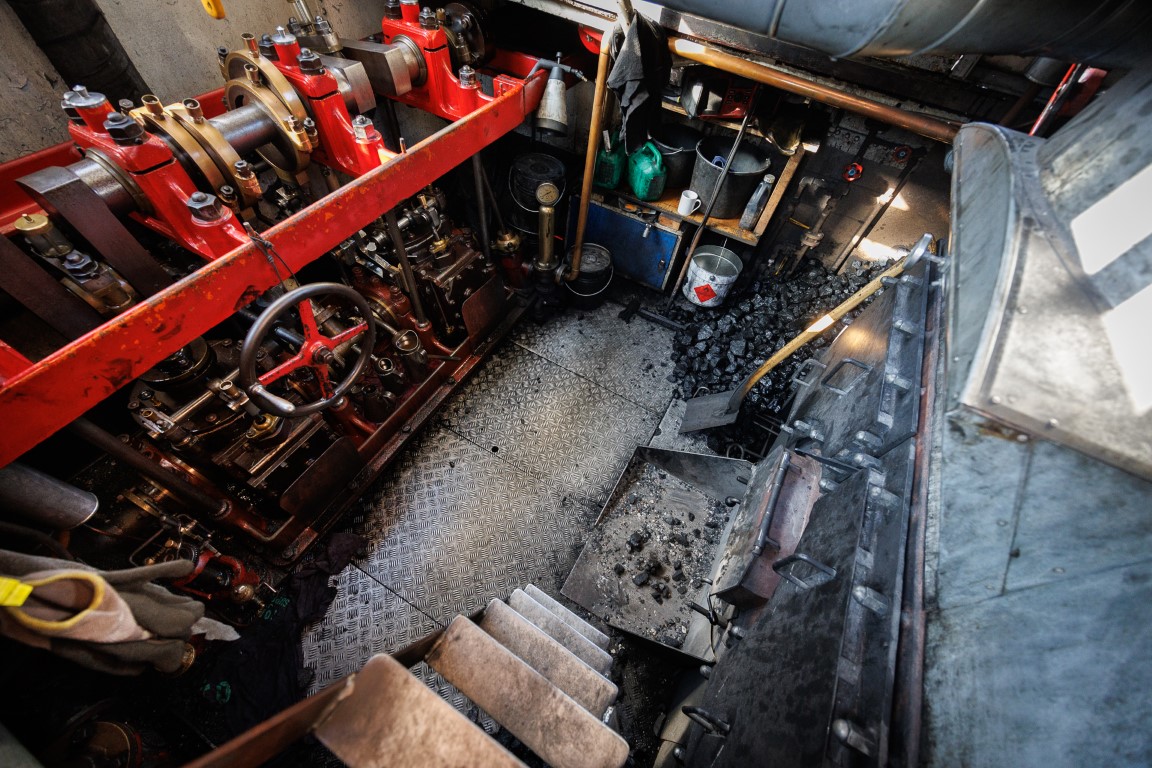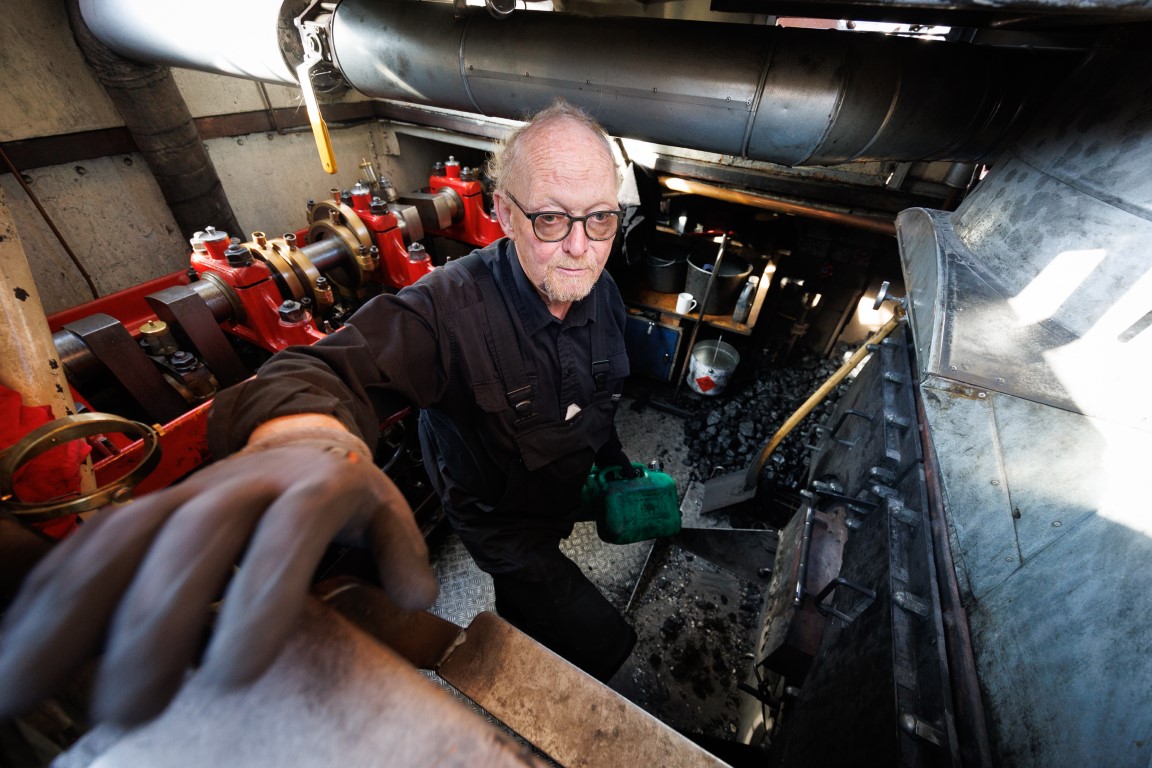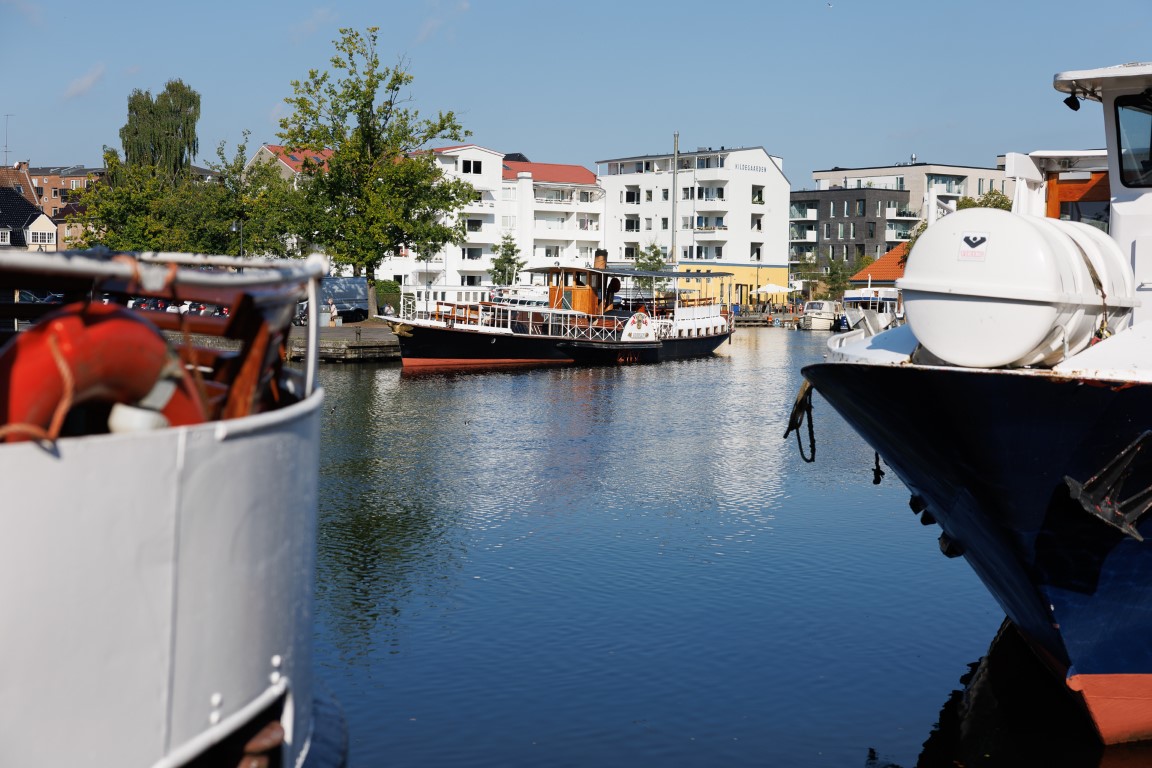On the world's oldest, original coal-fired paddle steamer, on-board conditions require adaptation, and the outside attention is massive. Safety is therefore something that calls for practice.
With 164 years in its wake, Hjejlen is a piece of sailing Danish history, which you can read much more about in the first part of our report from Silkeborg on this site. Here, CEO of Hjejleselskabet, Tommy Gubi Duelund, emphasizes the importance of all the company's seafaring employees being insured through the Danish Shipowners’ Accident Insurance Association.
And safety at sea is indeed something that is taken very seriously, as Christoffer Josefsen stresses. He is the CEO of the historical company Hjejlen Inc., which owns the total of nine boats making up the company's fleet, just as he captains Hjejlen itself.
The historic setting of what is today the world's oldest, original coal-fired paddle steamer is very much what attracts tourists. At the same time, the physical conditions – not least in the small engine room with the coal-fired boiler in the middle – are a special factor to work with when it comes to safety.
»We have to adapt to the conditions on board, which calls for some compromises and out-of-the-box solutions. We can also sense when we have a visit from the Danish Maritime Authority that they are very cautious. Of course, everything has to be in order, but they come with an extra man and an extra magnifying glass when Hjejlen needs to be examined,« Christoffer Josefsen says.
It takes a little extra time to reach the finish line, but it is time well spent, he believes, ensuring that everything is done by the book. Considering the public attention surrounding a ship like Hjejlen, the company is more than happy to invest in stability.
»I can't sail 300 feet with Hjejlen without at least 10 people taking pictures or filming, so we make a lot of effort to keep affairs in order – within the framework of the boat,« Christoffer Josefsen emphasizes.
As skipper, he will have the ultimate responsibility in an emergency, where clear chains of command and a sharp division of roles must form the basis for a safe handling of the incident. To this end, the chief engineer also plays an important position.
»I take care of the passengers and the general handling, while the engineer has to keep track of the engine. Should something happen there, it is the engineer I lean on as skipper, because he has the experience to assess what is happening in his area, and can, for example, shut down the boiler if necessary,« Christoffer Josefsen explains.
Bottom shelf near miss
As procedures go, Hjejlen uses the ISM code, but even that can't predict everything. Acting quickly is therefore highly important, and in this connection, the crew of Hjejlen receives natural help from the surroundings in which the ship operates.
»The fact that we operate so close to land, as we do all the time on the Silkeborg Lakes, is a huge advantage compared to if, for example, we were to cross the Kattegat. Then I don't think we could run Hjejlen in terms of safety as we do today. In the ISM code, we therefore also have a procedure for how to contact our land base so that they can take care of what needs to happen at their end,« Christoffer Josefsen says.
Should an accident occur, the first priority will therefore usually be to have the ship steered to the shore allowing the passengers to get off. The number of passengers has recently been adjusted downwards from 160 to 130, freeing up space otherwise used on life jackets – and the corresponding time to inspect them – on top of which, according to Christoffer Josefsen, it is generally safer.
The constant proximity to land is also one of the reasons why Hjejlen does not carry life rafts – in the vast majority of cases, it will be significantly faster to get the ship ashore than to evacuate people into different rafts.
»I choose to say that we are good at handling safety on board, because the few near misses we have are from the bottom shelf. But there are some small incidents, and that's actually fine, because then we become aware of what we need to keep an eye on,« Christoffer Josefsen says.
Safety must be alive
On Hjejlen, a typical incident will usually be a minor case of engine failure. For example, Christoffer Josefsen mentions how a steam pipe burst a leak a few years ago, and even though it did not pose a real danger, they still chose to 'go with belts and braces', as he says, and let the passengers ashore to be transported back by buses.
»It was a small leak, but the engineer – and I tip my hat to him for that – opted not to carry on, and the crew agreed, so we stopped. That’s the biggest near miss I can think of on Hjejlen, otherwise it’s been stuff like crew members stumbling over a doorstep on the fly, but again bottom shelf stuff,« he says.
Nevertheless, the crew stay prepared for more serious scenarios through various drills. Among other things, there is a lot of focus on man-overboard incidents, which are often practiced, not least due to the relatively high crew turnover from season to season.
»Hjejlen is a bit of a peculiar lady to dance with, because she is not very maneuverable. There is no such thing as a quick turnaround, so it can take some time to get back to someone who’s fallen overboard, and we have to be ready for that. In addition, we conduct regular fire drills,« he says.
»When we hire service sailors every spring, they have to go through some basic courses, all of which are about safety on board, such as lifesaving first aid, basic firefighting and what we call safety at sea,« Tommy Gubi Duelund adds.
Audited by the Danish Maritime Authority, the courses allow the sailors to obtain a maritime safety certificate, entitling them to serve as crew on the Hjejle Society's ships on the Silkeborg Lakes. In other words, it is limited to their current situation.
»It's a good model, and that's how we're going to move forward. Safety must be alive so that we can adjust if we see a need for it, perhaps after a conversion on a ship or a specific incident. And we have a good internal reporting culture in the company, so we’ll cover all the bases,« Christoffer Josefsen says.



